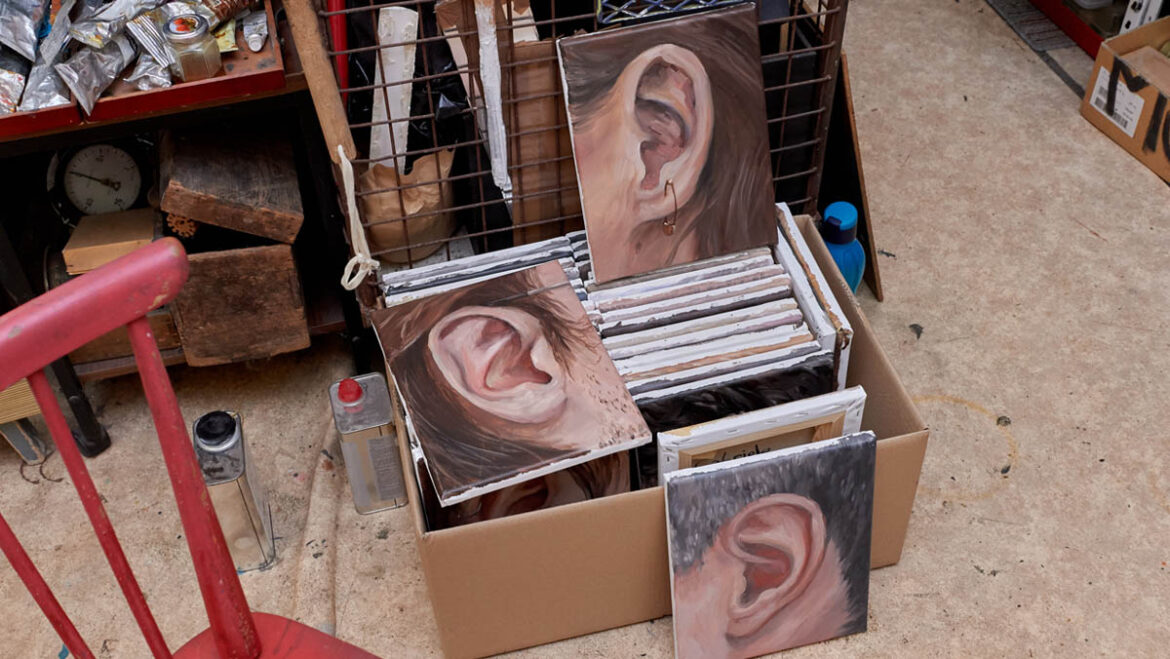Jeremias erzählt mir, dass diese Schnecken aus dem Garten seiner verstorbenen Großeltern stammen und mit Erinnerungen verbunden sind – er beginnt zu malen, und wir beginnen unsere Gespräche.
Was war der Auslöser, die Porträtreihe „Ear Collection“ zu starten?
Seit mittlerweile mehr als zehn Jahren sitze ich selbst für meinen Freund David Dawson in London Modell. Nach wie vor bin ich sehr von der konzentrierten Stimmung begeistert, die beim Porträtmalen entsteht. Es ist eine ganz eigene Form der Kollaboration. Ein oft fast unsichtbares Hin und Her von Impulsen und Reaktionen auf beiden Seiten der Leinwand. In seinem Atelier, dem ehemaligen Studio von Lucian Freud, habe ich damals zum ersten Mal mit Ölmalerei experimentiert und entwarf ein Ohren-Selbstporträt mithilfe eines Spiegels.
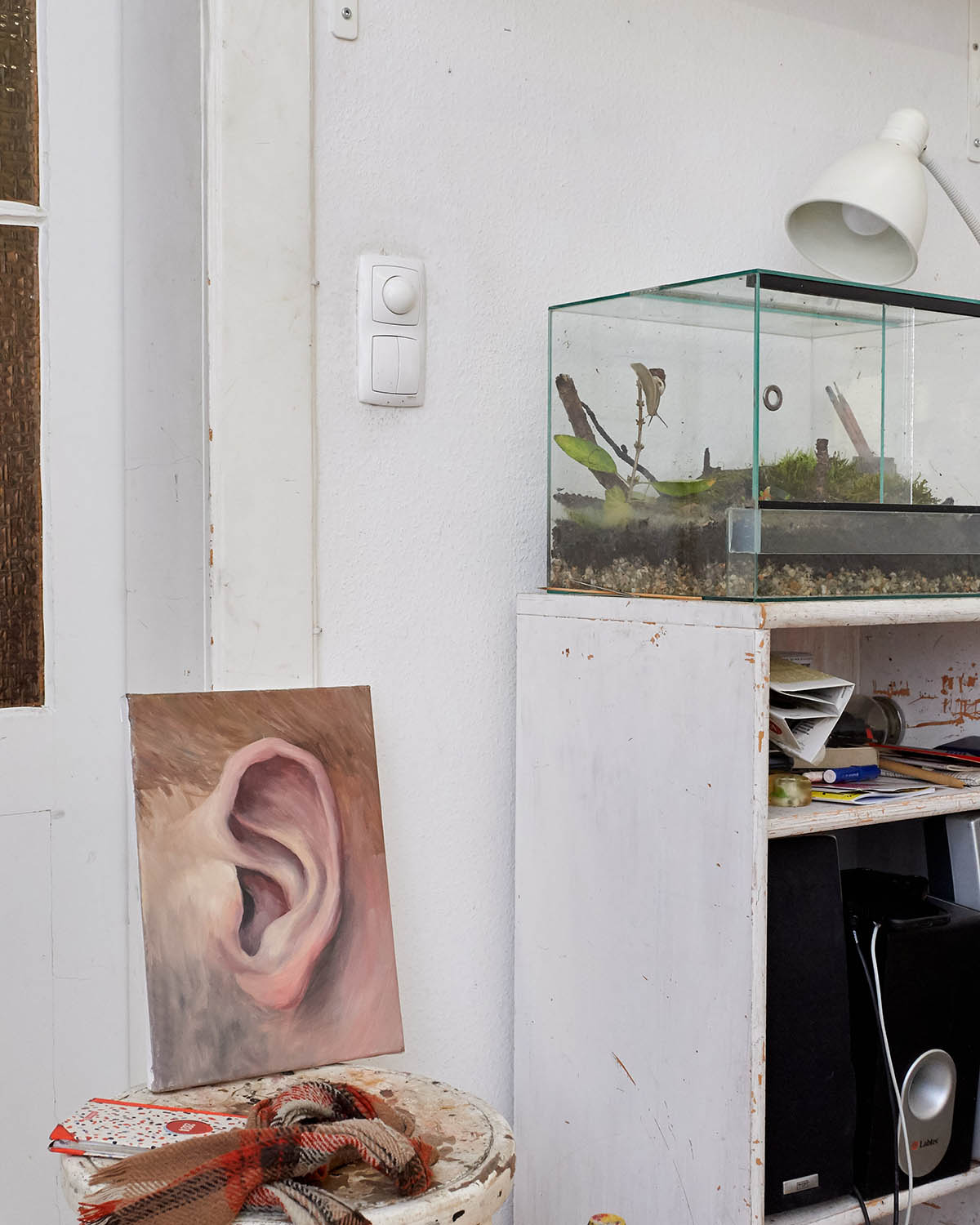
Welches war das erste Ohr, das du gemalt hast?
Genervt von der Umständlichkeit des Spiegels habe ich zurück in Wien meine engsten Freunde und Ateliergäste gefragt, ob sie sich als Modell anbieten würden. Deren auffällig große Bereitschaft und die so entstandenen spannenden Gespräche brachten mich dann erst auf die Idee, daraus eine fortlaufende Serie zu machen. Eine grundsätzliche Tendenz zum Sammeln hatte ich aber wahrscheinlich immer schon.
Welche Bedeutung hat das Ohr für dich?
Ursprünglich war das Ohr für mich ausschließlich ein dankbares Übungsfeld, um das Mischen unterschiedlicher Hauttöne in Licht und Schatten zu trainieren. Erst im Verlauf dieser Serie wurden mir weitere Aspekte stärker bewusst. Vor allem die absurde Individualität von Ohren, die ich erst so wirklich begreifen konnte, nachdem ich die ersten 50 fertigen Porträts gemeinsam an einer Wand zu sehen bekam.
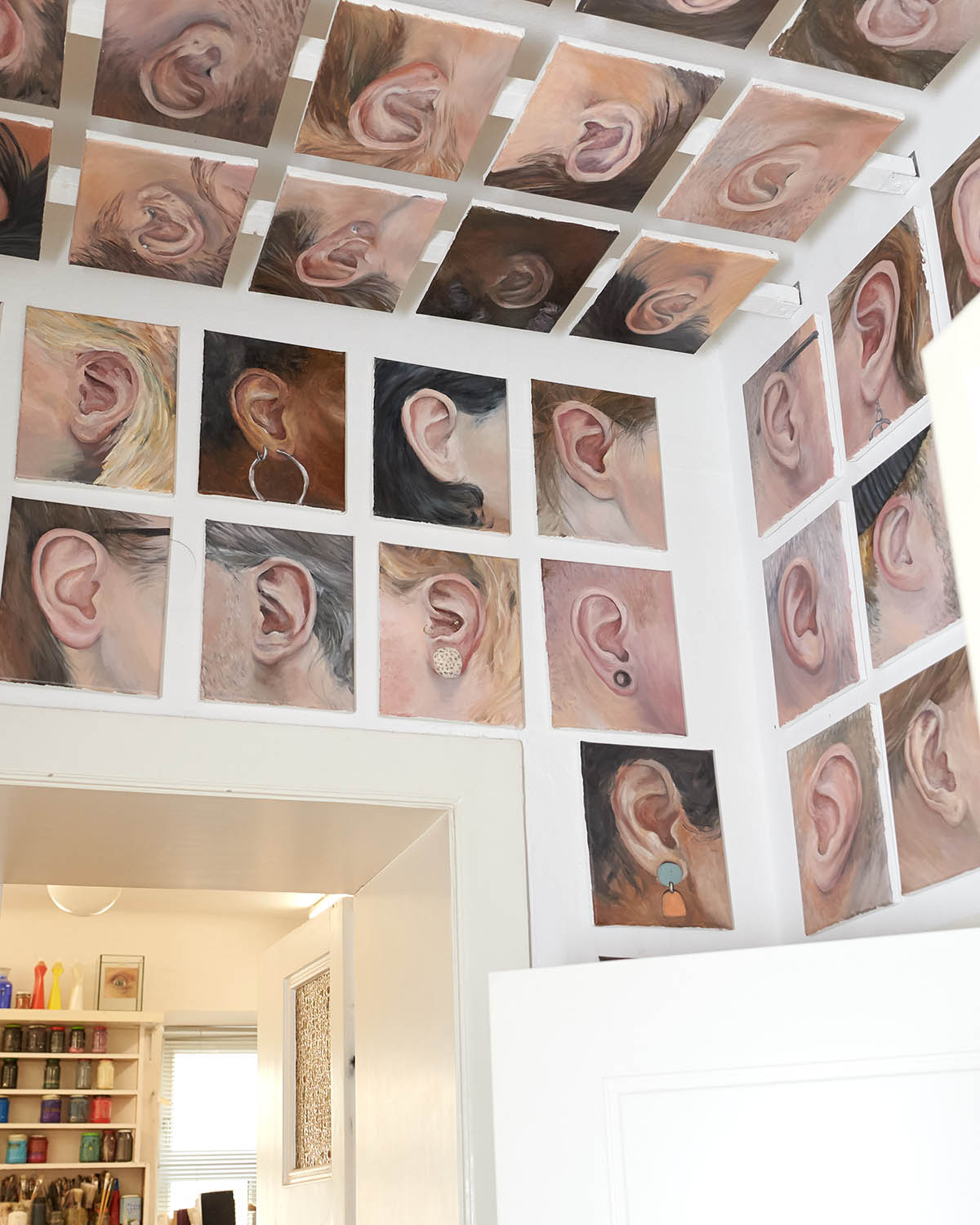
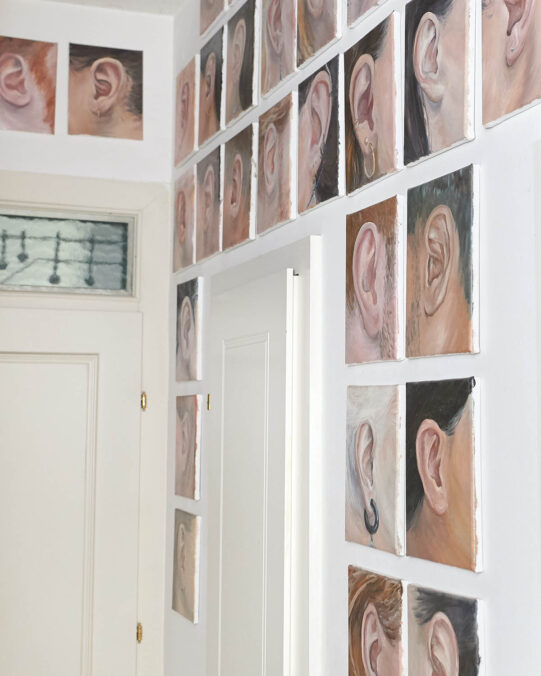
Wie spiegeln sich die Gespräche, die du mit deinen Modellen teilst, in deinen Werken wider?
Das ist wahrscheinlich die aufregendste Qualität dieser Serie. Zumindest in meiner Wahrnehmung ist die Atmosphäre des Gesprächs sehr deutlich im fertigen Bild erkennbar. Ich lege es nicht bewusst darauf an, aber stelle fest, dass eine hitzige Diskussion oder leidenschaftliches Blödeln ein ganz anderes Ergebnis befördert als gemeinsames Schweigen oder sanfter Austausch von Gedanken – auf jene Weise wird jedes Ohren-Porträt automatisch auch das Porträt unserer Unterhaltung. Diese Beobachtung gefällt mir besonders!
Woran denkst du, während du malst?
Ich versuche, mich maximal auf mein Gegenüber einzulassen und beim Malen kein technisches Rezept zu verfolgen. Glücklicherweise habe ich bislang ein gutes Gespür für interessante Persönlichkeiten. Gute Gäste ermöglichen gute Gespräche und der Rest passiert quasi nebenbei.
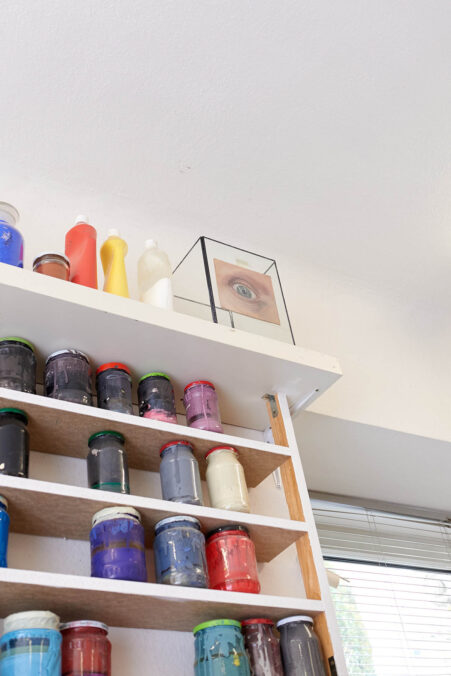
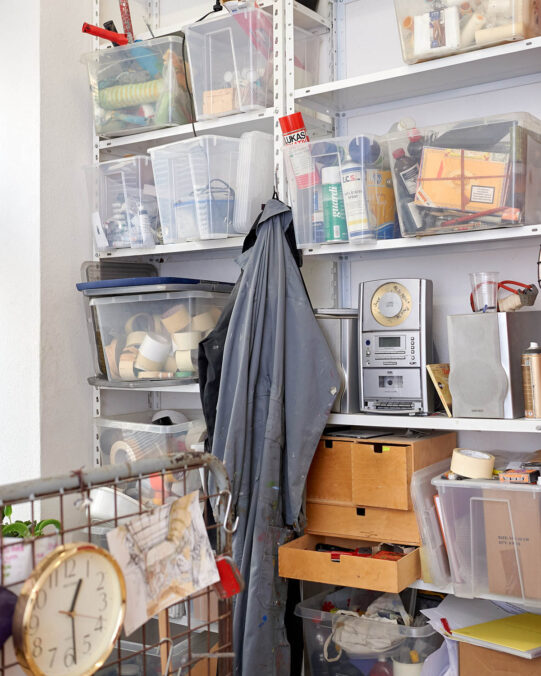
Arbeitest du immer im Overall?
Ich arbeite und lebe im Overall. Es ist unheimlich praktisch. Sobald ein Ausgeh-Overall für den Alltag zu viele Gebrauchsspuren aufweist, wird er zum Arbeits-Overall und verschwindet im Atelier, bis er sich vor lauter Farbe kaum mehr anziehen lässt. Es gibt dickere und dünnere Stoffe für alle Jahreszeiten und eine passende Farbe für jeden Anlass. Mich in einem anderen Kleidungsstück zu sehen ist eine sonderbare Rarität.
Hat das Projekt auch deinen Ansatz in Bezug auf andere Projekte verändert?
Auf alle Fälle hat das Projekt meinen Umgang mit Ölfarbe stark präzisiert. In meiner künstlerischen Arbeit abseits der Ohren geht es inhaltlich kaum um die Darstellung von Menschen, sondern um Maschinen oder Kreaturen aus meinen Kinderzeichnungen. Manchmal wird es dabei ein wenig einsam im Atelier. Mit der Ohren-Sammlung habe ich mir unwissentlich auch ein Instrument entwickelt, mein Atelier zu einem sozialeren Ort zu machen, und kann dadurch im Umkehrschluss noch tiefer in andere Arbeiten eintauchen, ohne komplett wahnsinnig zu werden.
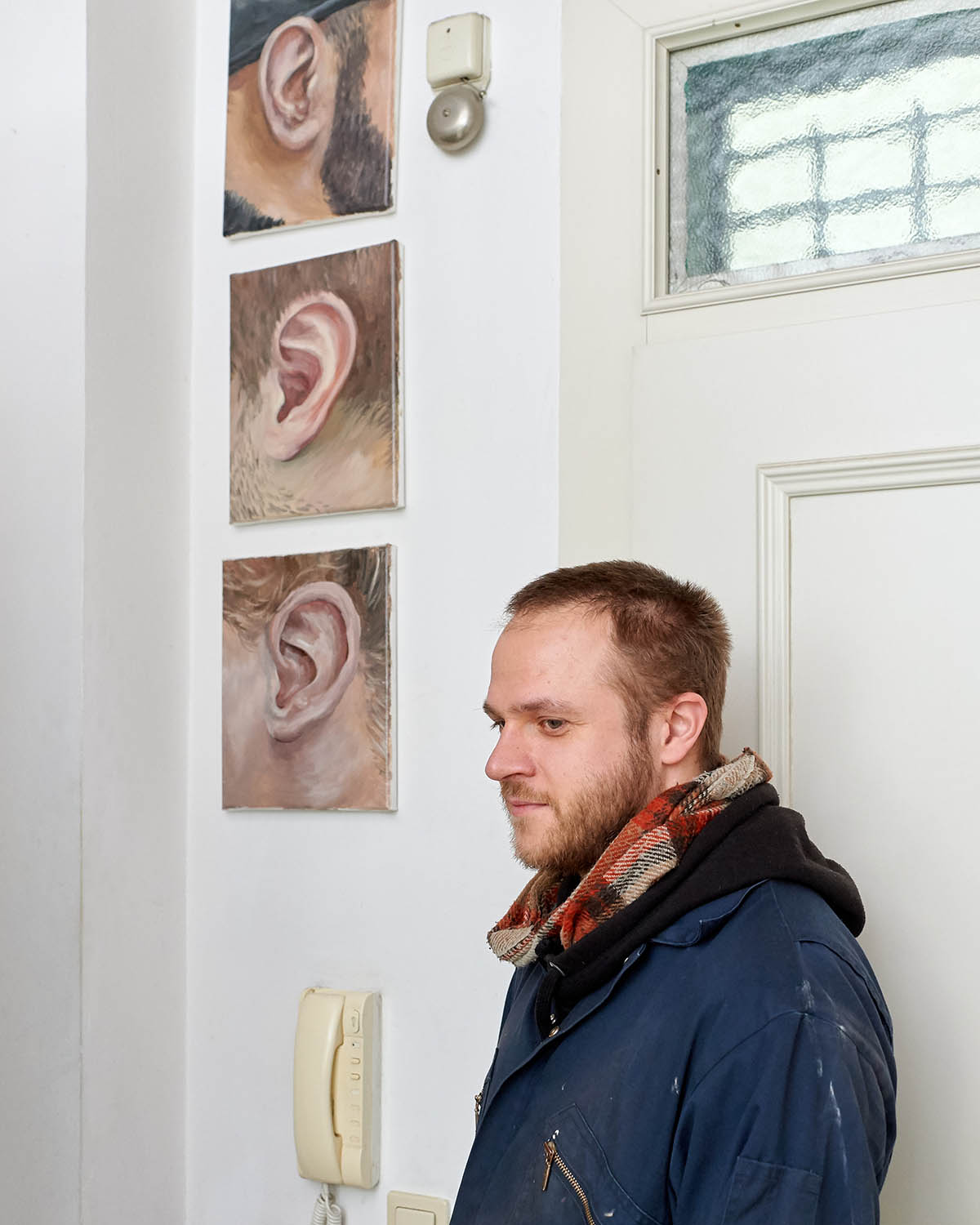
Das wievielte Ohr malst du heute?
Seit Beginn dieser Sammlung verliere ich regelmäßig den Überblick und kann dann monatelang nur grobe Schätzungen abgeben. Für Euch habe ich aber extra nachgezählt. Bis heute sind es 242 Ohrenporträts. Es gibt aber keine bestimmte Anzahl, die ich als Endpunkt der Serie anstrebe. Solange sich faszinierende Menschen als Modelle anbieten, werden weitere Porträts entstehen!
Jeremias Altmann – www.jeremiasaltmann.net, www.instagram.com/jeremiasaltmann/
Ear Collection by Jeremias Altmann – www.instagram.com/all_ears_jeremias




